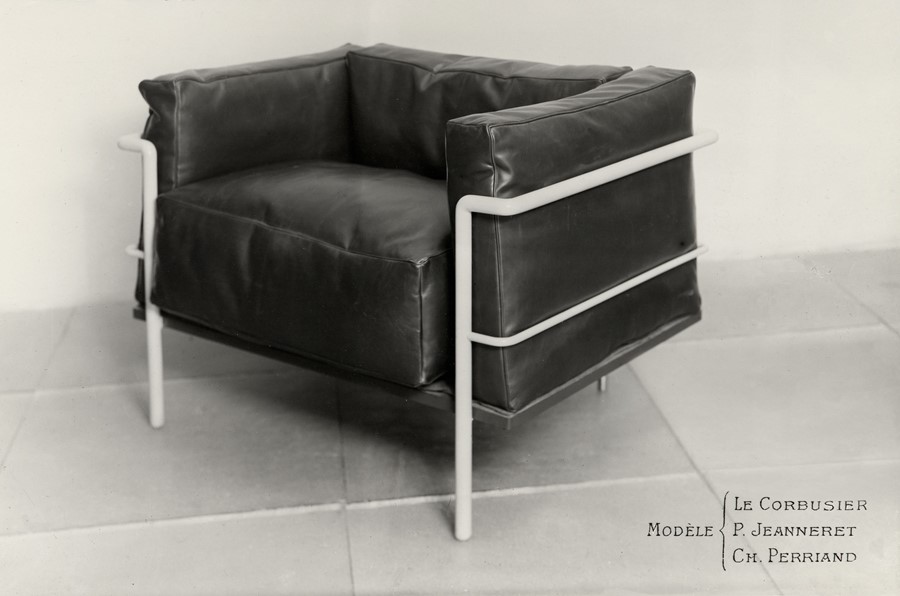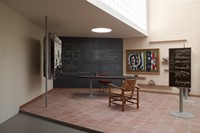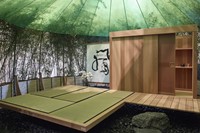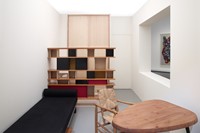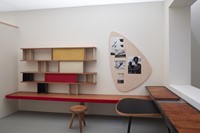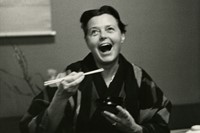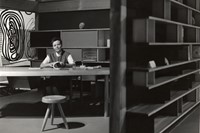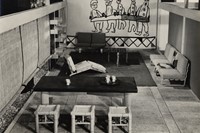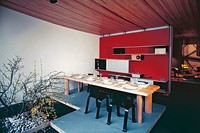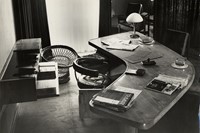Known as a furniture designer who worked with Le Corbusier, a new exhibition at the Fondation Louis Vuitton proves that it’s high time that Charlotte Perriand’s work is recognised in its own right
Who? Born in 1903, Charlotte Perriand is one of the most pioneering designers and architects of the 20th century. Despite this, she’s often only spoken about in conjunction with her male collaborators, such as Le Corbusier and Fernand Léger. This week, 20 years after her death, the Fondation Louis Vuitton has opened a mammoth new exhibition devoted to her life and work – the first time the Parisian museum has dedicated the entirety of its main galleries to a single person – proving that it’s high time her work is recognised in its own right.
If her name isn’t immediately recognisable, many of her creations are: from the chaise longue – designed with Le Corbusier and Pierre Jeanneret – and the block-coloured ‘nuage’ cabinet, to an entire ski resort in Les Arcs, France. Perriand made her name as a designer in the 20s and 30s, before she met Le Corbusier and during the time she worked with him, but she trained as an architect and maintained a holistic approach to the arts throughout her life. “It’s a shame that people know her just as a designer when you see all this,” says Sébastien Cherruet, one of Charlotte Perriand: Inventing a New World’s five curators. “She is still known as a designer who made furniture with Le Corbusier. Which is reflective of the place of women throughout the 20th century.” With much input from Pernette Perriand, Charlotte’s daughter, and her husband Jacques Barsac, Charlotte Perriand: Inventing a New World is a rich and immersive look at the singular creator.
What? Perriand drew influence from a multitude of places, from movements like Art Brut and Modernism to countries like Japan. She relentlessly thought about the way people interact with furniture, and this was central to her process. Her swivelling armchair of 1928, for example, gives people the freedom to engage with the space around them and the people occupying it, while staying seated; an asymmetric ‘free form’ kitchen table has sides of varying lengths (and thus, no sharp corners) to make it easier to walk around. “She always designed a space,” remarks Cherruet, “where all the elements are interconnected.” The exhibition recreates spaces and structures to Perriand’s exact designs, some painstakingly put together from photographs dating back to the 1920s and 30s. The effect is arresting: to walk through rooms filled with her designs and original materials, and sit in her (extremely comfortable) metal and leather armchairs, indicates how deftly Perriand married function and elegance.
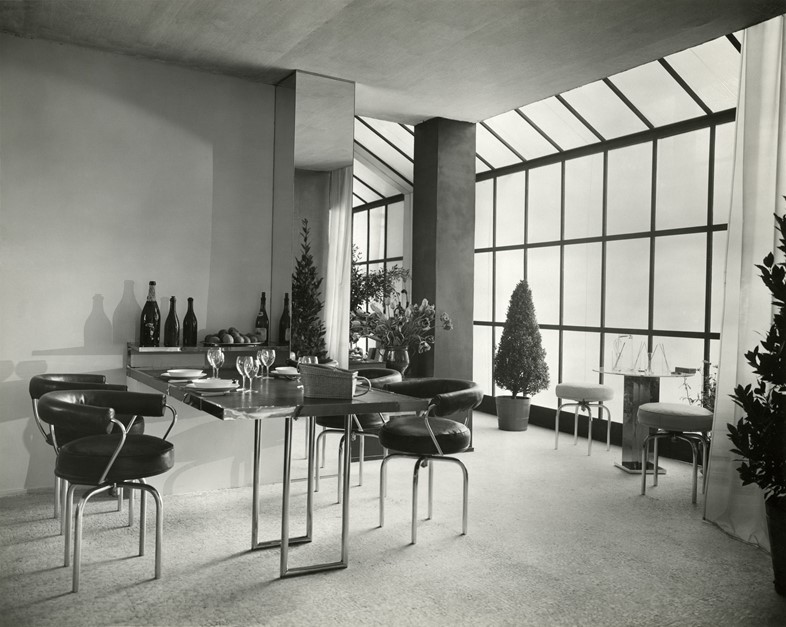
Nature was a constant source of inspiration for Perriand too. While her early works of furniture and interior design favoured metal and glass, over the years she began to incorporate materials like wood and rattan. Hulks of wood, stones and shells would strike Perriand while outdoors, and often she would repurpose them as sculptures to be displayed in a home. A large sketch featured in the exhibition shows alterations to a design for a long wooden table: Perriand had met with the carpenter making the table and subsequently adapted her design according to the grain of the piece of wood. The same considerations came into play when designing apartment blocks for the sprawling ski resort of Les Arcs, in which Perriand ensured the mountain views were preserved by building into the incline and sloping roofs downwards.
“To Perriand, works of art were elements as useful as knives and forks in an interior setting,” says Cherruet. It was her belief that art should be enjoyed as part of daily life. To that end, she would collaborate with artists frequently: a painting by Léger was commissioned for a space created in 1935, and prints of Picasso drawings were used in a window blind design, where, upon sliding a screen across a window when it gets dark, the print is revealed. The latter creation was for low-cost housing: “She put drawings by Picasso and Art Brut photographs in these spaces, and I think it’s incredible to imagine that in a house for everybody, there was a Picasso. Imagine an artist like Picasso today offering work in this way for council housing,” says Barsac, Perriand’s son-in-law. The exhibition is made up of over 400 pieces of art – with 200 by Perriand, the rest are by her contemporaries in various media, demonstrating her skill in bringing different art forms together.
Why? The Fondation Louis Vuitton exhibition – which stemmed in part from LVMH chairman Bernard Arnault’s own love for her work – reveals just how pioneering Perriand was. Spread across multiple floors in the Frank Gehry-designed Fondation, the works in Charlotte Perriand: Inventing a New World engage with the spaces within the extraordinary building. In one of the final rooms, a Japanese tea house originally commissioned in 1993 by UNESCO is recreated, complete with bamboo shoots and sprawling greenery sheltering the calm structure. Completed when she was 90 and had long been engaging with Japanese design, Perriand’s sanctuary fits perfectly in the museum’s top-floor, light-filled gallery. At the time, Perriand explained: “My idea was to create an ephemeral tea area where people could meditate and dream about a new golden age, a place humming with cultural exchange, as well as diversity and universality.” These are sentiments echoed throughout her entire career; in her outlook on life and art, Perriand was ahead of her time.
Charlotte Perriand: Inventing a New World is at the Fondation Louis Vuitton, Paris, from October 2, 2019 – February 24, 2019.
